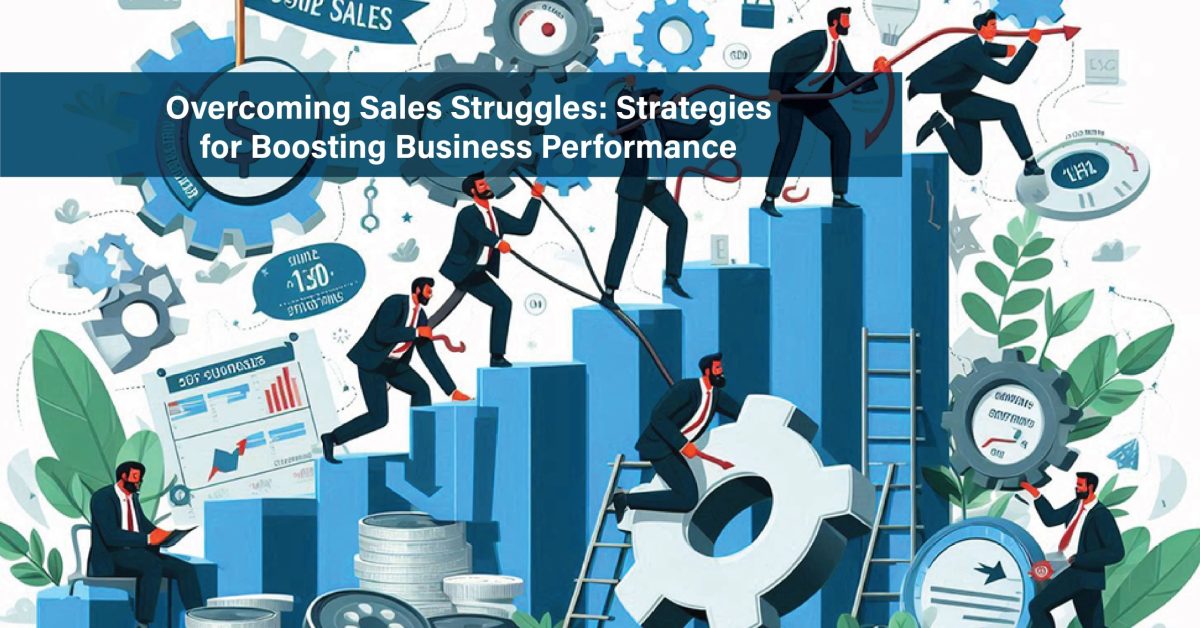In the dynamic business world, sales performance could be termed the heartbeat of success. However, a good number of businesses suffer challenges that could limit their sales growth. Whether dealing with a dip in market demand, rising competition, or ineffective internal processes, overcoming these challenges is quite indispensable for continuous business performance. Selling and marketing appear to be two similar terminologies, but they have huge differences between them. Selling is an infinitely smaller concept compared to marketing. Here are strategies to guide you in navigating and hurdling over sales woes.
Clear and Achievable Sales Goals
Off the bat, your goal should be to have clear and achievable sales goals. What do you want to achieve in terms of sales volume, revenue, or new customers? Once you have defined what you want to achieve clearly, you will then formulate a plan for the team to get there. Having real and measurable sales goals will help in keeping your team focused and on the right track. The goals must be specific, attainable, relevant, and timed by the overall objectives of your business. These large goals should then be cascaded down into small tasks to keep your team motivated and focused. Review and adjust them in terms of performance and changes in the market.
Know Your Market and Customers
At the center of any effective sales strategy is the ability to understand your market and customers. Who are your ideal customers? What are their needs and pain points? If you know who you sell to, then you will be able to adjust the sales message and methods to fit the particular needs of those customers. This type of market research will help you to know trends, customer needs, and pain points. Use the information to make necessary changes in effectively meeting those needs with your products or services. Engage with your customers through surveys, feedback forms, and one-on-one discussions—for this is where meaningful insights that will drive your sales strategy may well originate.
Training and Development Investments
First, isolate the sales and marketing teams. A good, trained sales team is like a goldmine. Hence, invest in training programs to upgrade their skills and knowledge consistently. Work on product knowledge, selling techniques, customer relationship management, and negotiation. skills. Continual development opportunities are not only good for performance but will also keep your team cheerful and help in its retention.
Technology and Data Analytics
The utilization of technology and data analytics enables a company to make its sales process more organized and structured in a better, more logical, and more ordered manner. The impact of technology on better sales performance cannot be downplayed in today’s digital age. Effectively manage customer interaction and data using CRM. Bring in data analytics to give meaningful insights pertaining to trends in sales, customer behaviors, and market opportunities. These would further help in making effective decisions and tailoring suitable sales strategies.
Improve Customer Engagement
Drive sales by making strong relationships with customers. Give focus to excellent customer service and personalization of the customer experience. Engage them frequently in your brand through social media, email marketing, or other digital channels. Enquire and respond to feedback promptly, and reward their loyalty with appreciation and special offers.
Rework Your Sales Process
There can be huge performance improvements if you streamline your sales process. Identify the bottlenecks and inefficiencies in your current process and work toward eliminating them. Follow best practices such as lead scoring, automated follow-up, and standardized sales scripts. That way, you will ensure a smooth and efficient sales process that gets your team out there closing deals and hitting targets.
Keep Your Team Motivated and Incentivized
A motivated sales force will perform the best. Establish a work environment that is supportive of success and one that truly rewards staff based on performance. Design an incentive compensation program tied to your sales goals, including bonuses, commissions, and other incentive compensation. Discuss with your employees regularly to see if they’re experiencing any problems and provide any necessary assistance.
Respond to Market Changes
The business world keeps changing; hence, keep flexible. Observe and respond to market trends. Whether involving new technologies, venturing into new markets, or adjusting the product line, flexibility in response to change will help keep the entrepreneur ahead of the competition.
Close the Deal
The close of the deal is the most crucial part of the sales process. This is the final stage in the sales process where the sale is finalized, securing the customer’s commitment to buying a product or service. During this process, the salesperson should be well-prepared, have effective communication, and have a great understanding of the customer’s needs and concerns. The whole idea is to make the customer sure and confident in their decision. If you are focused on the needs of your customers and provide frictionless experiences, it won’t be hard for you to increase the chances of closing deals successfully.
Conclusion
This means that selling through struggles has to be strategized, improved, and customer-centric. The following will help boost your business performance and grow your business: understanding your market, setting clear goals, investing in the team, using technology to your advantage, engaging with customers, optimizing sales processes, motivating your team, and being adaptable. Now, the key to success lies in the ability to adapt and innovate given the challenges.
